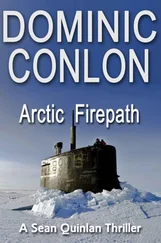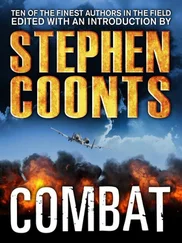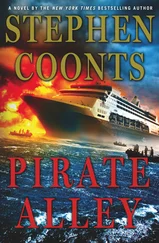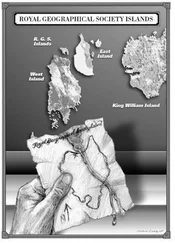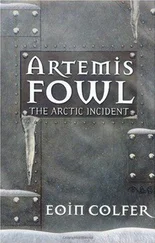Ghost Blue Twelve miles west of St. Petersburg 0058 hours
Major Dellalo pushed the throttle forward as he brought the stick back, sending the F-22 higher and yet higher into the thin, cold air. The SA-2 Guideline had a range of about thirty miles and a ceiling of sixty thousand feet. Thirty miles from the SA-2 site on the western end of Kotlin Island would reach to the far end of St. Petersburg to the east and halfway back to the Finnish border to the west.
His F-22 had two advantages if the Russians could actually see his plane and target it-speed and altitude. The top speed of the F-22 Raptor was classified, of course, but his baby could crowd Mach 2.5 and have knots to spare. Her service ceiling was sixty-five thousand feet.
It should be possible to get above a Guideline’s reach, and while he couldn’t outrun one-the SA-2 had a velocity of about Mach 3-the speed of his Raptor would make it nearly impossible to catch if the missile was launched from a stern position.
His major disadvantage at the moment was the fact that Kotlin Island, with its SAM base, lay only eight miles ahead, and perfectly blocked his route back to international airspace out over the Baltic Sea. If they wanted to, they would get at least one clear shot at him.
How had they spotted him? His radar screen showed a number of targets in the immediate vicinity, all at lower altitudes. Most of them were civilian aircraft, but a few had the characteristic signatures of Russian military aircraft. A JOINTSTAR E-3 Sentry AWACS over the North Sea was feeding him data on possible threats. There were two radar returns that worried him in particular… streaking in over Vikulova, from the south. The Sentry was identifying them as MiG-31s.
His threat receiver lit up again, and this time it stayed lit and he heard a high-pitched warble in his ears, which meant that the threat radar had switched to a high PRF tracking mode. So the Russians did see him, after all.
“Haunted House, Haunted House, Ghost Blue,” he called. “Oscar Sierra, repeat, Oscar Sierra. They have a lock.”
“Copy that, Ghost Blue.”
He suppressed a momentary flash of anger. It would be nice if “Haunted House,” the radio handle for the op controllers at Fort Meade, had something constructive to say.
The warning tone wailed away incessantly. A launch, a dim flash of light in the gloom immediately below…
By lowering a wing he could see the exhaust plume of the missile climbing through the fog, its exhaust illuminating the white haze below. A second missile rose close behind the first, followed by a third.
He was still climbing, passing through fifty-four thousand feet.
It was time to go balls to the wall. He slammed the Raptor’s throttles full forward, angling his thrust to increase his rate of climb.
Behind and below, the missiles began angling toward their high-flying target.
The question for tomorrow, Dick Delallo thought, was how did the Russians see this stealth aircraft? The pressing question of the moment, however, was how to avoid being shot down.
The Art Room NSA Headquarters Fort Meade, Maryland 1658 hours EDT
Charlie Dean walked past an Army sentry at the door and stepped at last into the Art Room, his glance taking in the dozens of technicians and communications specialists huddled over consoles around the room, the numerous monitors, and the huge central display on the back wall. Currently the main display showed a satellite map of a large city, but he couldn’t tell, offhand, which city it was. A river snaked in from the right, then split to flow to either side of a large triangular island. Major highways were highlighted with yellow or white lines.
Two time readouts glowed in the upper right corner. It was 1658 hours Eastern Daylight Time; wherever Lia was at the moment, it was just before one in the morning.
Radio chatter sounded from speakers overhead.
“Haunted House, Haunted House, Ghost Blue. Oscar Sierra, repeat, Oscar Sierra. They have a lock.”
“Copy that, Ghost Blue.”
William Rubens looked up as Charlie Dean walked in. “They’re okay,” he told Dean without preamble. “ She’s okay.”
“Good to hear it,” Dean replied, keeping his voice neutral. Rubens knew that he and Lia were close, but neither of them wished to say so aloud.
Dean was afraid that someday someone higher up the bureaucratic chain of command would declare that his and Lia’s relationship was somehow unprofessional. In the modern, Orwellian world, the illogical, whimsical boundaries of political and sexual correctness could be redrawn overnight.
“Jeff said they were in a shoot-out?”
Rubens nodded. “Things went bad. We think our contact was a dangle.”
The word was tradecraft slang for someone deliberately exposed to a hostile intelligence service in order to lure that service’s agents into a trap or a compromising position.
“For?…”
“Not now, Dean,” Rubens said, his voice brusque. “We’ve still got a… situation.”
Dean almost asked if the situation involved Lia but managed not to say anything. He knew Rubens well enough to know the Deputy Director would fill him in when-and if-he needed to know.
“Launch! Launch,” an anonymous voice said over the speaker. Dean could hear the stress behind the words. “I’ve got three missiles coming up, probably Guidelines. Maneuvering…”
Dean understood Rubens’ curtness better now. If an NSA asset-in this instance meaning an aircraft somewhere over the Gulf of Finland off of St. Petersburg-was being shot at, that was a serious situation indeed. The bad old days of the Cold War were long gone, but that didn’t mean there weren’t occasional problems with America’s new ally the Russian Federation. In the global arena, more often than not, Russia still reverted to her old role as America’s adversary. In fact, in some ways it was tougher now. In the Cold War, at least, you knew the Russians were the enemy. Nowadays, they were nominal allies in the War on Terror, as long as their cooperation didn’t interfere with their own agenda, such as dominance of the former Soviet republics, or the struggle for influence in the Middle East, or the developing international crisis in the Arctic…
Jeff Rockman was looking up at the big screen. Dean watched him a moment, then walked over to the coffee mess tucked away against one wall. He returned a moment later with two cups full. He set one on Rockman’s workstation desk.
“Hey, Charlie. Thanks.”
“Who’s shooting at whom?” Dean asked, looking up at the display. It was, at the moment, singularly unhelpful, showing a swath of satellite-revealed sea and land from Estonia to Finland. A white icon labeled “Akulinin and DeFrancesca” was blinking on the waterfront in St. Petersburg. Another, marked “Ghost Blue,” was drifting slowly north a few miles off the coast of Kotlin Island.
Rockman glanced at him, then back at the board. “The Russkies just popped three SAMs at our comm relay aircraft. It’s getting a little tight over there.”
“Sounds it.” He could see three icons marking the SAMs, now, painted in by the computers running the display. They were swiftly closing the range between Kotlin and Ghost Blue. Other icons showed in the area as well, some orange, meaning unknowns, others red, meaning confirmed potential hostiles.
“‘Russia shoots down American aircraft inside Russian territory,’” he said, mimicking a newscaster’s voice. “‘Details at eleven.’ The old man’s a bit worried about the publicity, you know?”
Dean did know. The National Security Agency and Desk Three were successful only insofar as they could elude the spotlight of public awareness. The encounter over the Baltic could well mean big trouble for the Agency.
Читать дальше

